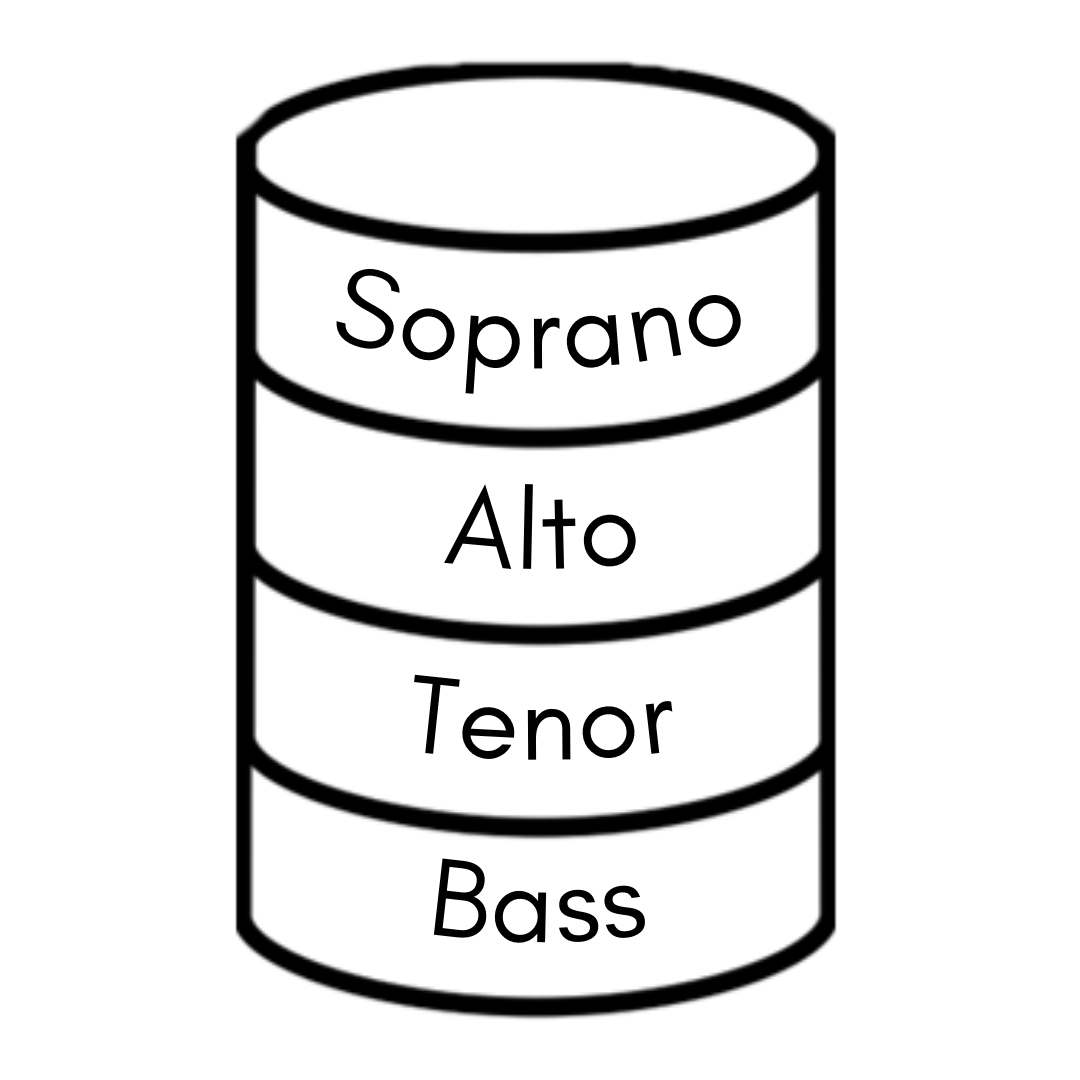To make use of an RSS feed, you need some "feed reader" (or "aggregator") software. Most modern web browsers have feed readers built in.
The RSS feeds for Spirit of Spokane Chorus are listed below...
Spirit of Spokane Chorus upcoming events:
https://www.spiritofspokanechorus.org/dbaction.php?action=rss&dbase=events
Spirit of Spokane Chorus news:
https://www.spiritofspokanechorus.org/dbaction.php?action=rss&dbase=uploads
Barbershop 101
The Roots of Barbershop Harmony
A cappella singing in the barbershop harmony style finds its roots in a rich African-American tradition. Learn more about the historical aspects of barbershop harmony from this resource, provided by the Barbershop Harmony Society.
Voice Parts in Barbershop Singing
Barbershop harmony is vocal harmony produced by four parts: tenor, lead, baritone, and bass. The melody is sung by the "lead" part, which is below the highest part.
Although the voice parts in barbershop harmony have different names and functions than they do in other SATB or SSAA vocal styles, the foundation is the same—beautiful music, stunning chords, and a passion to create the intangible, moving essence of music that brings us together.
TENOR is a harmony part sung consistently above the lead. The tenor should have a light, sweet, pure tone that will complement but not overpower or overshadow the lead voice. Light lyric sopranos generally make good tenors. The range for tenor is from G above middle C to high F on the top line of the clef. Occasionally you will have notes below the lead. When this happens, your tonal quality will need to change from being light and clear to being more full and round. Flexibility is the key and knowing when you need to change.
LEAD is the melody and must be sung with authority, clarity, and consistent quality throughout the lead's range. The lead is responsible for conveying the interpretation, emotion, and inflections of the song. The range is equivalent to a Soprano II and is from A below middle C, and C above middle C. On the rarer occasions when the melody line is featured in another part, the lead will need to be aware to lighten her vocal quality to allow the melody to shine wherever it is being sung. If you are in a quartet, the others will follow your lead. In a chorus, we all follow the director.
BARITONE covers approximately the same range as lead. The voice part is similar to the equivalent of an Alto I except that baritone harmony notes cross the lead notes. Primarily sung below the lead but sometimes sung above, depending on where the melody is situated, baritones must constantly adjust their balance to accommodate their position in the chord. They must have a good ear.
BASS is the lowest note in the barbershop chord. Bass singers should have a rich, mellow voice and very often sing the root and fifth of each chord, providing the foundational tone of the chord being sung. The bass sings a well-produced, resonant tone with a minimum of vibrato. The range is comparable to that of a contralto or Alto II in traditional choral music. The range is from E-flat below middle C to G above middle C. Similar to the baritone, this part is written in the bass clef an octave lower than it is actually sung. A bass sings with more presence to fill out the “cone" (see below). The bass part provides the foundation of each chord.
A Note About Vibrato: The term “vibrato” is from the Italian verb to “vibrate” or to “quiver.” It is an audible pulsation in the singing voice produced by proper support, relaxed vocalization, and good technical singing. Vibrato brings vitality to the voice. However, overly expressive vibrato, or an excessively wide and slow abnormal vibrato that manifests itself as “wobble,” or the “tremolo,” which is an uncontrolled narrow and fast fluctuation in pitch, does not allow ensemble singers to blend related pitches into a unified sound. In barbershop singing, as with all ensemble singing where unit sound is the goal, vibrato in the voice should be minimized. A critical characteristic of the healthy vibrato is that the singer can control and adapt it to suit the style of music being sung.
The Barbershop Cone
Barbershop harmonies have a cone-shaped balance which is different than the traditional cylindrical or equal balance of SATB or SSAA ensemble music which also has the melody in the highest voice. Our top voices sing a harmony part with less weight and intensity than our lower voices, and the melody is traditionally sung by a part unique to barbershop - the Lead.
Balance of parts in Balance of parts in
barbershop harmony SATB choir


A journey of learning
As a member of a barbershop ensemble, you will learn many finer points of the genre, as well as embark on an extraordinary journey of growth as a singer and performer.

